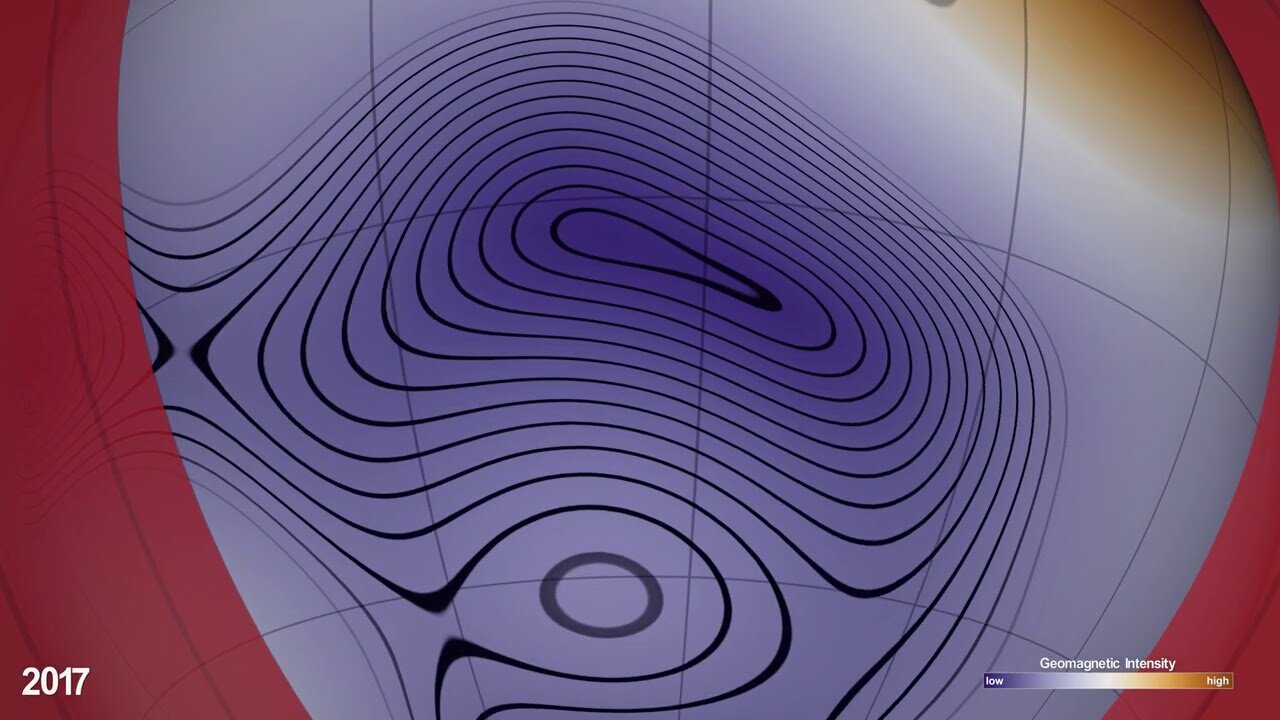Premium Only Content

South Atlantic Anomaly 2015 through 2025 2160_p60
The bulk of Earth’s magnetic field originates deep within its core, at the boundary between the molten outer core and the solid mantle. The magnetic field extends past the surface into space and acts like a protective shield around the planet, repelling and trapping charged particles from the Sun. But over South America and the southern Atlantic ocean, an unusually weak spot in the field, called the South Atlantic Anomaly (SAA), allows these particles to dip much closer to the surface. Particle radiation in the SAA can knock out onboard computers and interfere with the data collection of satellites that pass through it.
The SAA creates no visible impacts on daily life on the surface, and its weakening magnetic intensity is still within the bounds of what scientists consider normal variation. However, recent observations and forecasts show that the region is expanding westward and continuing to weaken in intensity. Observational data from 2015-2020 found that the SAA has recently started to split from a single valley, or region of minimum field strength, into two cells; and models out to the year 2025 show the split continuing in the future, creating additional challenges for satellite missions.
NASA’s geomagnetic and geophysical research groups are using observations and models to monitor and predict future changes in the SAA and the rest of Earth’s geomagnetic field – helping prepare for future challenges to satellites and humans in space.
-
 1:24:24
1:24:24
Criminal Content
4 hours agoTHE DARK KNIGHT (2008) Movie Reaction w/ Coby FIRST TIME WATCHING
15K8 -
 48:21
48:21
FULL SEND PODCAST
4 hours agoStephen A. Smith Calls out the Democrats and REVEALS LeBron Will Retire Next Year!
33.6K1 -
 51:14
51:14
Candace Show Podcast
3 hours agoBREAKING! Diddy Private Investigators Offer Money To Influencers | Candace Ep 106
84.7K161 -
 1:03:22
1:03:22
In The Litter Box w/ Jewels & Catturd
22 hours agoWW3 WATCH | In the Litter Box w/ Jewels & Catturd – Ep. 694 – 11/19/2024
63.4K15 -
 1:33:33
1:33:33
The Officer Tatum
3 hours agoLIVE: Biden FLIRTS With WW3, Tom Homan BLASTS Dem Governors, The View Melts down | OT Show EP 11
48K39 -
 3:44:23
3:44:23
RanchGirlPlays
21 hours ago🔴 Fallout 76: Will the Aliens Finally Bring Better Servers? 🤣👽
61.1K4 -
 26:15
26:15
Cooking with Gruel
4 hours agoLive With Chef Andrew Gruel - Taking Cooking Questions
38K5 -
 48:18
48:18
PMG
18 hours ago $0.41 earned"Hannah Faulkner and Vittoria | FIRST PRO LIFE FASHION COMPANY"
14.3K1 -
 6:02:30
6:02:30
LumpyPotatoX2
8 hours agoTuesday VIBES - #RumbleGaming
36.9K -
 1:59:22
1:59:22
The Quartering
7 hours agoTrump BEATS Felony Charges, Man On Man Kiss CUT From Gladiator Movie, Matt Gaetz Hacked!
111K23